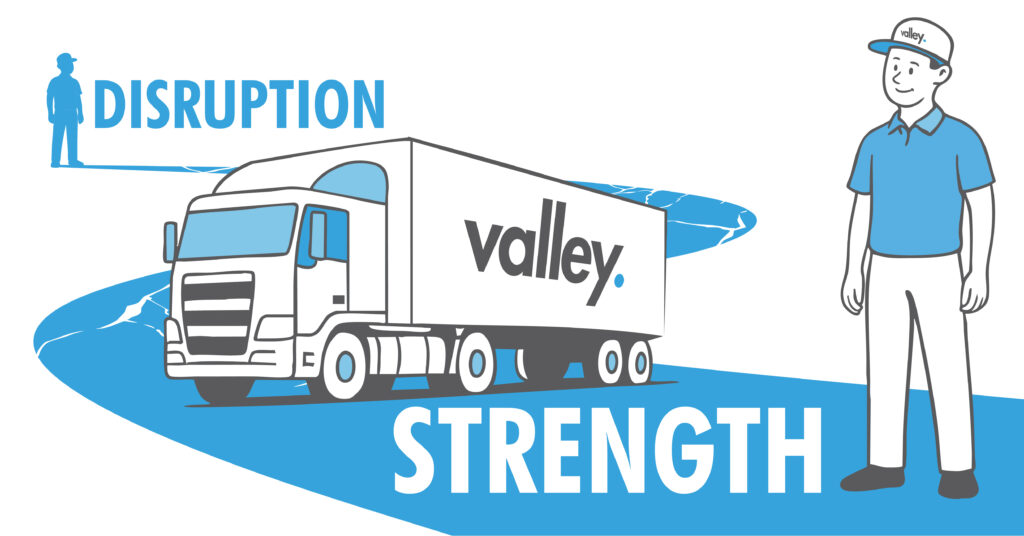Learning from Disruption: Turning Setbacks into Strength

Disruption has become part of everyday logistics. Weather events, labor strikes, border closures, or global supply challenges can derail even the best-laid plans. What separates companies that struggle from those that grow stronger is how they learn from each event and adapt for the future.
Quick Answer
Learning from disruption in logistics means studying what went wrong, identifying weak points, and acting quickly to prevent repeat issues. Fleets that document lessons from each event turn short-term problems into long-term improvements.
Why This Issue Matters
The logistics industry now faces constant change. Global conflicts, volatile fuel prices, and extreme weather all disrupt supply chains. According to MDPI, fleets that review and adjust operations after disruptions recover up to 30 percent faster than those that do not.
The key is not avoiding disruption, it is learning how to adapt when it happens.
Case Study: Turning a Port Strike Into Strength
When a major port strike halted shipping across several trade lanes, a global logistics company conducted a detailed post-event review. Their findings revealed two major weaknesses:
- Inventory blind spots: Gaps in tracking caused misaligned deliveries.
- Overdependence on one hub: Without alternate routes, operations stopped completely.
The company diversified routes, improved tracking visibility, and trained staff to manage contingencies. Within a year, they cut potential delay risk by 30 percent.
As Ngit.com says, companies that build backup routes and digitize operations are now among the fastest to recover after major global disruptions.
The lesson is clear: resilience starts with learning, not luck.
Lessons From Recent Global Disruptions
The last few years have tested every part of logistics. Pandemic shutdowns, port closures, and labor shortages exposed weak spots across supply chains. The fleets that adapted fastest had already built flexibility and discipline into their systems.
Flexibility Over Rigidity
Create multiple carrier options, warehouse hubs, and delivery routes to prevent single points of failure.
Strong Partnerships
Maintain good relationships with suppliers, brokers, and carriers. In times of crisis, partnership strength decides who gets priority service.
Technology as an Enabler
Real-time visibility, predictive analytics, and exception alerts help fleets react before issues escalate.
Transparency With Clients
Shippers prefer frequent updates, even bad news, over silence. Honest communication preserves trust.
Strategic Stock Buffers
Keep limited extra stock for critical products or clients, reducing dependence on unstable routes.
Financial Preparedness
Maintain a reserve fund for temporary cost spikes or capacity shortfalls. Companies that plan financially can adapt operationally.
These habits transform reactive logistics into proactive, data-driven operations.
From Disruption to Resilience
Each disruption is a free audit of your systems. Companies that analyze what failed, document responses, and strengthen weak spots build resilience for future challenges.
Resilience does not just protect freight, it protects reputation. Fleets that stay reliable during crises become the first choice for customers when stability returns.
Risk and Insurance Connection
Resilience also reduces financial risk. Fleets with proven crisis management, backup routes, and risk documentation are more attractive to insurers. Everbridge notes that businesses with tested continuity plans experience faster recovery and less financial loss during disruptions.
Insurers increasingly assess preparedness the same way they review safety programs. Fleets that can show adaptability often receive stronger coverage terms and lower premiums.
How the Industry Can Respond
Companies that want to turn disruption into opportunity can start with a few practical steps:
- Run post-event reviews: Hold short debriefs after every major disruption. Capture what worked and what failed.
- Build a living playbook: Update response procedures regularly and keep them accessible to all teams.
- Cross-train staff: Ensure key roles have backups so operations never depend on one person.
- Invest in visibility tools: Track shipments, supplier status, and weather alerts from one dashboard.
- Communicate early: Share updates with clients and partners before they ask.
Each of these steps improves readiness and builds long-term trust.
Real-World Example: How Learning Creates Growth
A North American carrier experienced multiple weather-related shutdowns in 2023. Instead of treating them as isolated events, the company gathered route, time, and performance data.
They discovered that 60 percent of their delays occurred on one corridor affected by seasonal storms. By adjusting schedules, adding local warehousing, and improving early-warning alerts, they reduced weather-related downtime by 45 percent the following year.
This proactive learning process turned disruption into a measurable competitive advantage.
FAQs
Why is learning from disruption important in logistics?
- Because every crisis exposes weaknesses that can be fixed. Companies that learn adapt faster and reduce future losses.
How can fleets start building resilience?
- Start with post-event reviews, backup route mapping, and stronger communication systems.
Do insurers care about resilience planning?
- Yes. Fleets with crisis documentation and risk mitigation plans often get better policy terms.
What role does technology play in resilience?
- Real-time tracking, automated alerts, and predictive analytics allow fleets to act before disruption spreads.
How often should a company update its contingency plans?
- At least once a year or after any major disruption that tests your response.
Final Thoughts
Disruption in logistics is inevitable, but the damage is not. Every event is an opportunity to strengthen your systems and reputation. Fleets that analyze, adjust, and apply lessons from disruptions become more agile and more trusted over time.
Learning from disruption in logistics turns short-term setbacks into long-term advantages. Fleets that commit to reflection, training, and proactive planning stay ahead of competitors when the next challenge comes.
